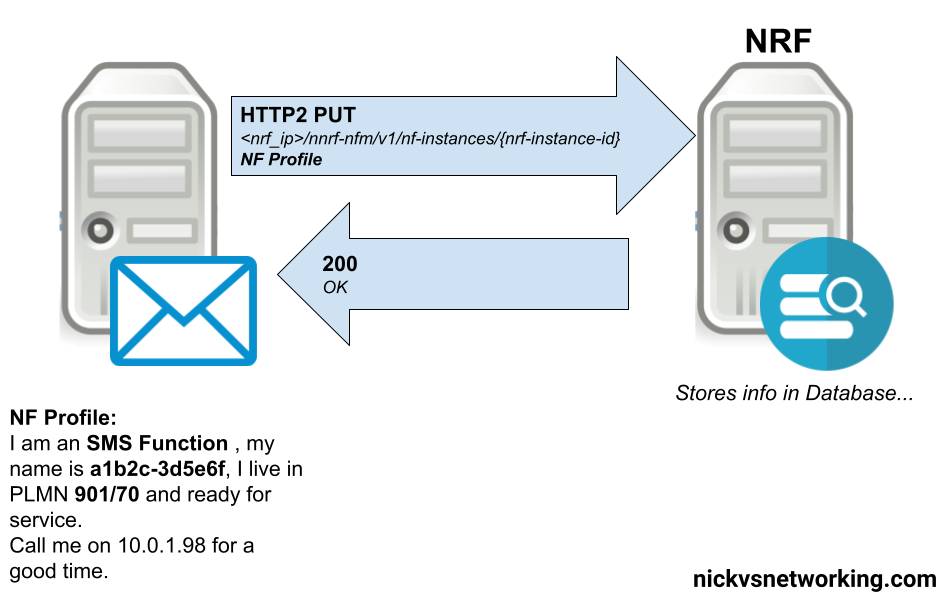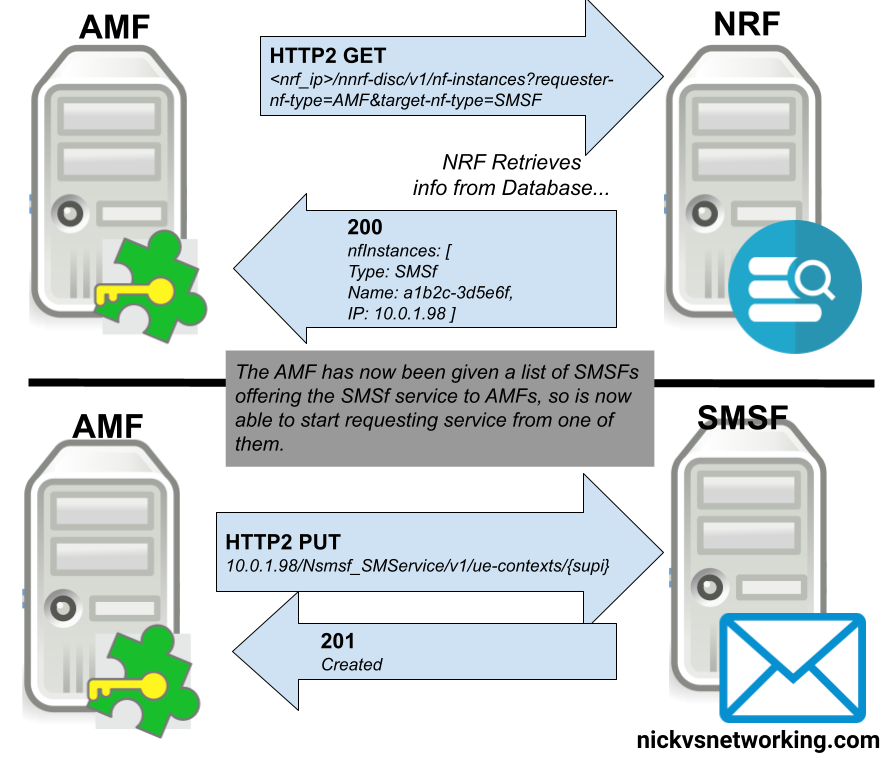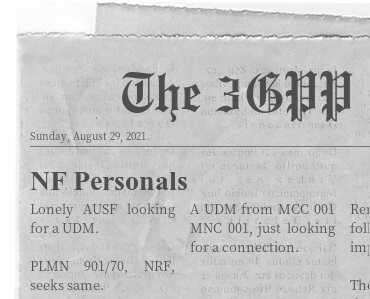The Network Repository Function plays matchmaker to all the elements in our 5G Core.
For our 5G Service-Based-Architecture (SBA) we use Service Based Interfaces (SBIs) to communicate between Network Functions. Sometimes a Network Function acts as a server for these interfaces (aka “Service Producer”) and sometimes it acts as a client on these interfaces (aka “Service Consumer”).
For service consumers to be able to find service producers (Clients to be able to find servers), we need a directory mechanism for clients to be able to find the servers to serve their needs, this is the role of the NRF.
With every Service Producer registering to the NRF, the NRF has knowledge of all the available Service Producers in the network, so when a Service Consumer NF comes along (Like an AMF looking for UDM), it just queries the NRF to get the details of who can serve it.
Basic Process – NRF Registration
In order to be found, a service producer NF has to register with the NRF, so the NRF has enough info on the service-producer to be able to recommend it to service-consumers.
This is all the basic info, the Service Based Interfaces (SBIs) that this NF serves, the PLMN, and the type of NF.
The NRF then stores this information in a database, ready to be found by SBI Service Consumers.
This is achieved by the Service Producing NF sending a HTTP2 PUT to the NRF, with the message body containing all the particulars about the services it offers.

Basic Process – NRF Discovery
With an NRF that has a few SBI Service Producers registered in it, we can now start querying it from SBI Service Consumers, to find SBI Service Producers.
The SBI Service Consumer looking for a SBI Service Producer, queries the NRF with a little information about itself, and the SBI Service Producer it’s looking for.
For example a SMF looking for a UDM, sends a request like:
http://[::1]:7777/nnrf-disc/v1/nf-instances?requester-nf-type=SMF&target-nf-type=UDM
To the NRF, and the NRF responds with SBI Service Producing NFs that match in JSON body of the response.

More Info
I’ve written in a more technical detail on the NRF in this post, you can learn about setting up Open5Gs NRF in this post, and keep tuned for a lot more content on 5GC!
